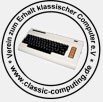Alles anzeigenHm? I tried. But I'm afraid my report is not very useful:
1. I unzipped your file, stored the file inside ("NODISKEMU.bin") on the SD and powered my petSD+ with this SD plugged in. No update. The old version started up (20171005). BTW: What version number should be shown with your bin?
2. I renamed the file to petSD+.bin (the name in the "official" bin-files from the website). No change. Version 20171005 started up again.
3. I have to mention, that I never updated via SD so far. Is there any thing to prepare for this? Bootloader? Up to now I flashed the ATmega (and the ATtiny) with a TL866-clone and/or an Atmel STK-500. So I did with your bin now, too. This time the petSD+ did not start up. Just some display flickering in the lower right half of the display. The busy LED turned on and off rapidly.
4. To "repair" my petSD+ I wrote another bin with the TL866 and this time I gave the version 20181028 a chance again. And now it worked for me without any problem. With and without IEEE connected. Spontaneous self-healing?
I don't know whether this will function now forever. I'm afraid it won't.
And I wonder what's the trick with the update via SD? Should it have worked as I did? Or am I wrong with my setup in any way?
I just tried the .bin file I sent you on my spare petsd+ and it updated fine from the SD card. I have never programmed the ATmega from the Minipro TL866.
I use a USBasp programmer with a AVR atmega32 system board to set the fuses and program the initial .hex code. After that I add the .bin fie to the SD card and program it that way. I have also programmed it via AVRDUDE after compilation but it works either way.
The only thing I can think of is that the petSD+ will only re-program itself from a .bin file on the SD card if the ID's match. I wonder if your intial programming didn't not work fully and it needed a few goes.
Either way if it is working leave alone.
The version would have been yesterday's date - it's based on the last version Nils posted with a few modifications for the OLED and Steves cbmSD Mini. I agree we may never get to the bottom of why are seeing startup issues but we should never give up ![]()

